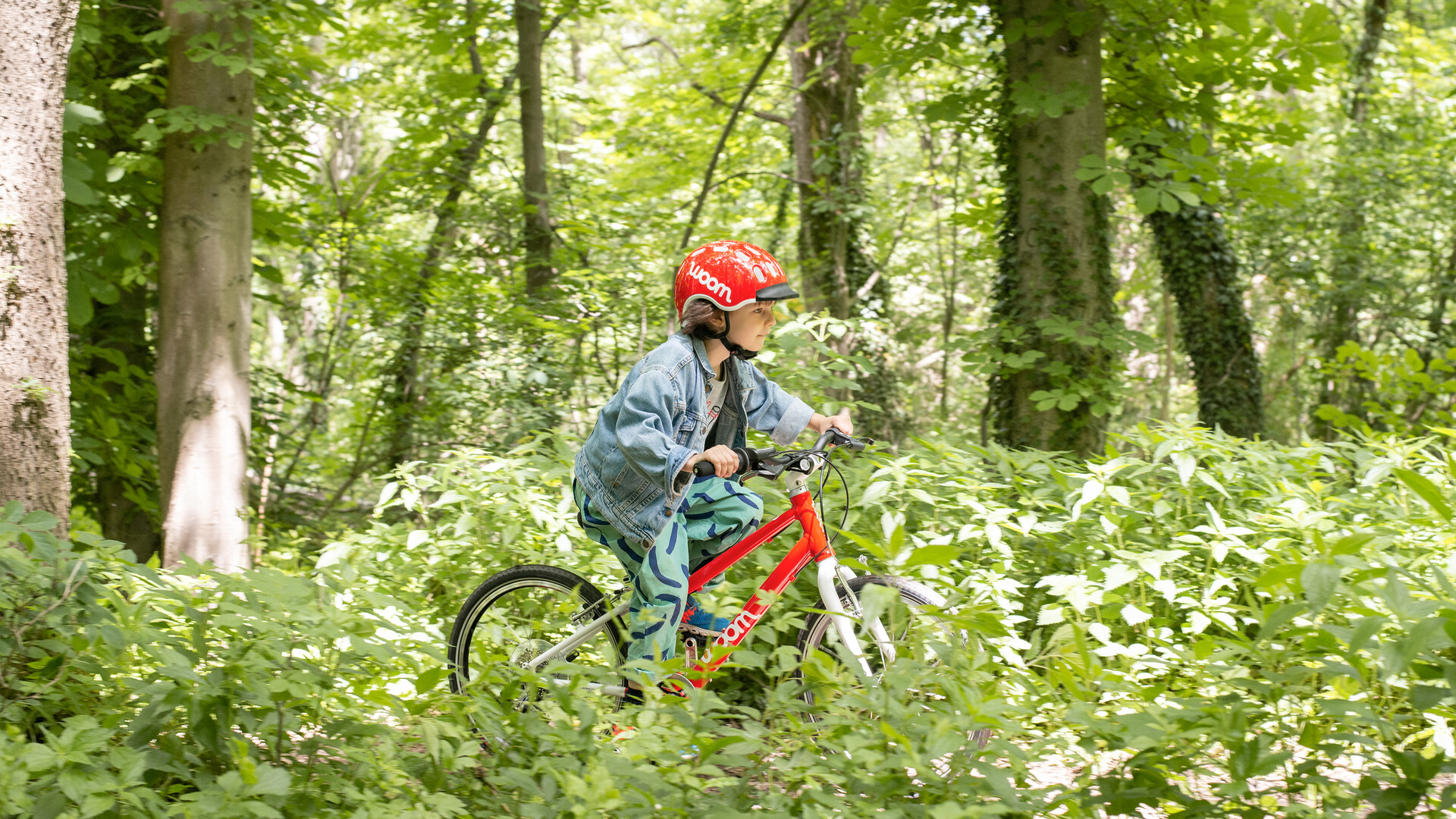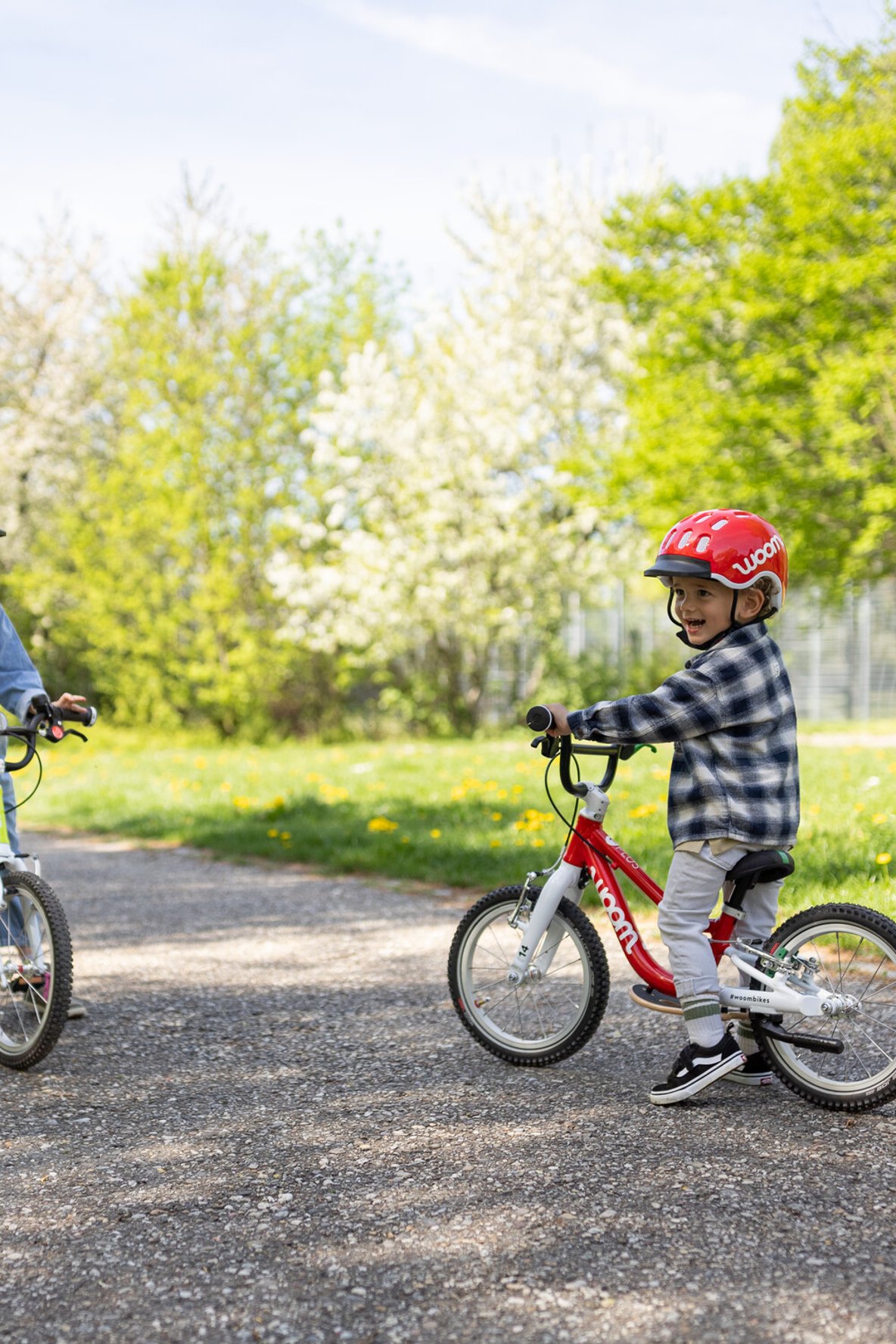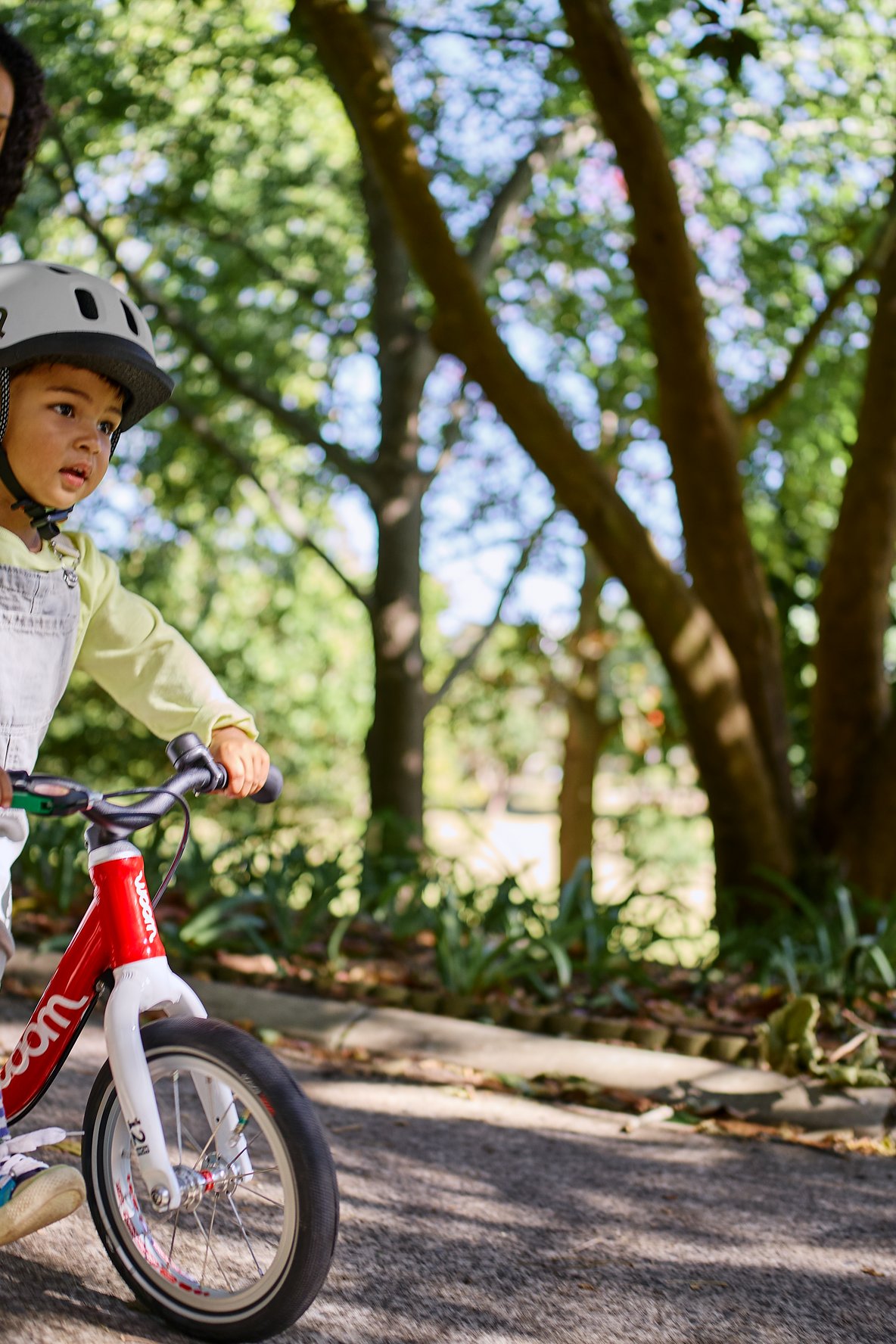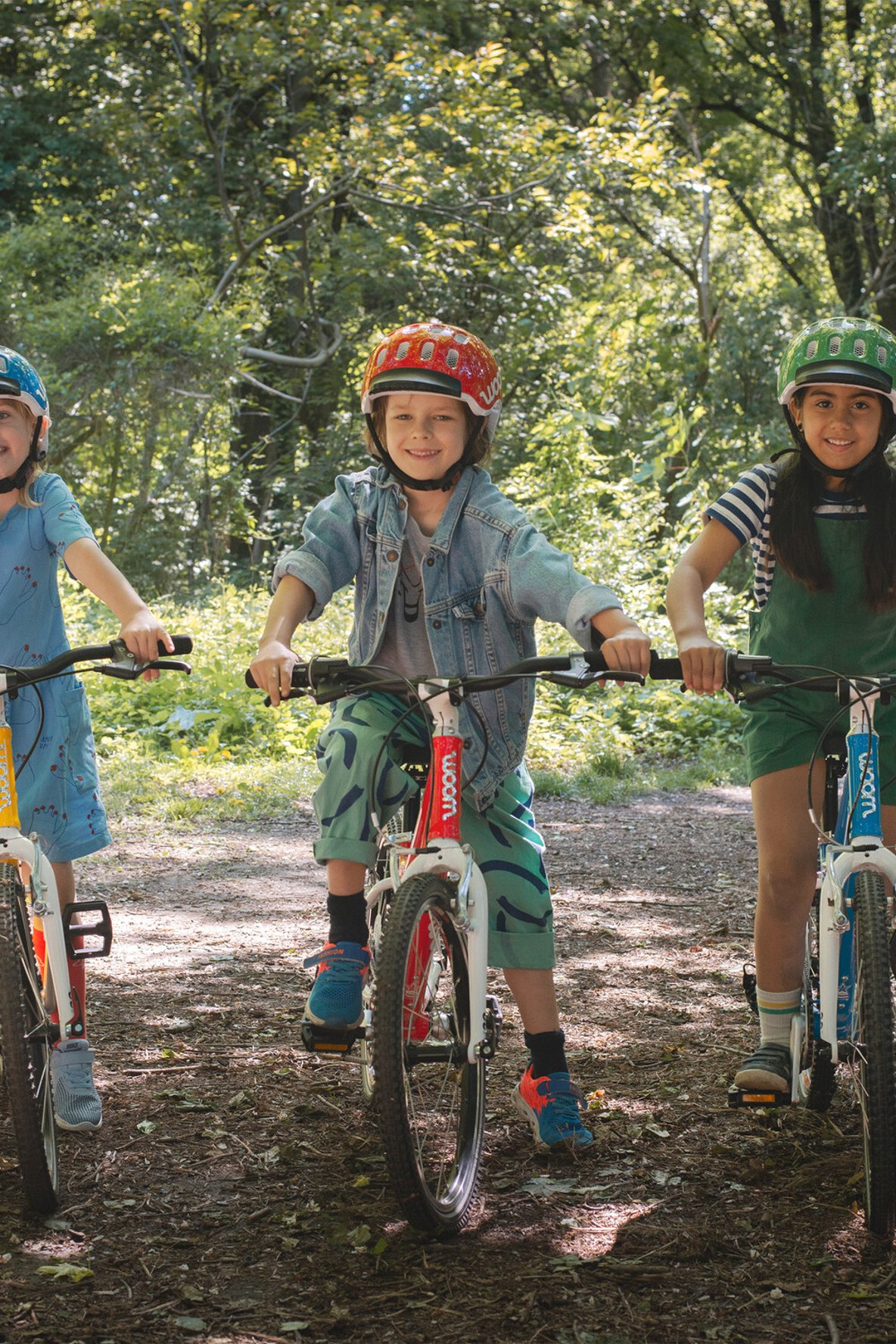Kids shift into gear with the woom ORIGINAL 4
There's no universal rule that dictates when a child is ready to transition to a geared bike; first and foremost, it depends on their ability as well as where they ride. Keep reading to see when gears make the most sense for your child.

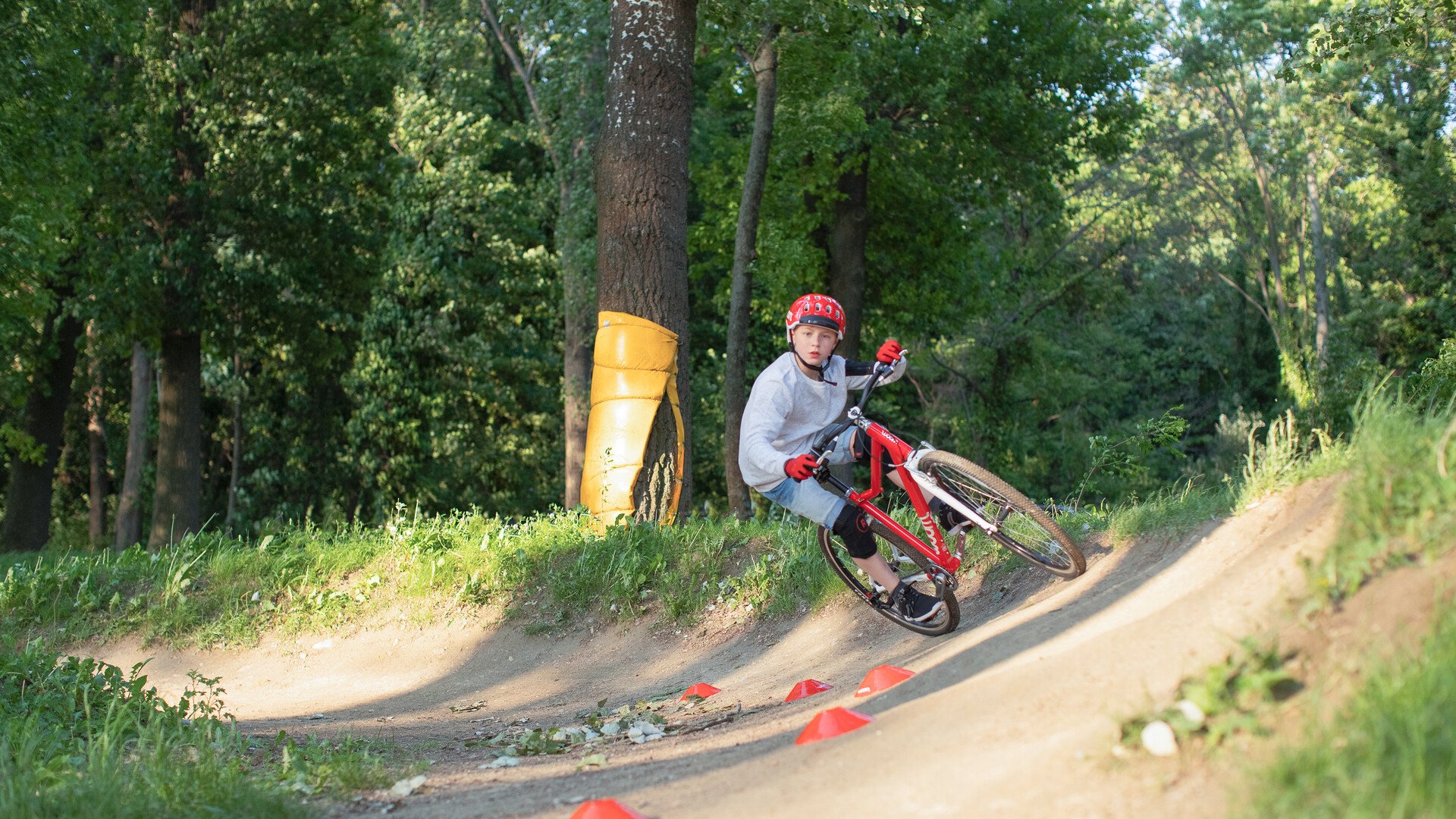
All beginnings are…
When your child is first getting into bikes, it's important for them to feel at ease, knowing that they can get used to each new movement at their own pace. There are many new skills to learn, like keeping balance, pedaling, steering, braking, and then combining it all. It's far from easy!
That's why it's wise for kids that are learning to ride – or who have just grasped the basics – to stick to a single-speed bike until they are ready to get to grips with the added complexities of gears.
Balance bikes are widely considered the best introduction to the world of cycling by providing a fun no-pedal platform that helps little kids learn how to keep their balance and steer.
Even if your child prefers to brake with their feet when they're starting out, it's still worth giving them a balance bike with a handbrake so they can try it out as soon as they're ready. That will help them prepare for the transition to their first pedal bike.
Watch this video for tips on how to teach your child to use their balance bike.
Time to start pedaling!
Has your child already mastered balance and braking safely? Now it's time for the next step: their first pedal bike.
As a general rule, children move onto their first pedal bike between the ages of three and five. The biggest difference to their current balance bike is that they’re now expected to pedal. Before they even get on the bike, our top suggestion is to begin by demonstrating the fundamentals of how a pedal bike actually works.
Then it's time to get out in the real world. Don't forget to make sure the emphasis is on having fun rather than training. Through the act of playing, children will subconsciously pick up on the essentials of bike riding – pushing off to start, turning the pedals, using the front and rear brakes, and coming to a gentle stop.
During this learning phase, your child should focus exclusively on the act of riding to ensure that they get the hang of being on the bike. Adding gears at this early stage would be distracting and your child is likely to be overwhelmed by the addition of a whole new process.
What’s more, distances tend to be limited at a young age; short routes to nursery or a local playground won’t usually require gears.
But time flies – and often before you know it – the little adventurers will be ready to step up a gear…
...with gears on their bike!
Now we're talking! Has your child mastered the basics of biking? Do they cruise around corners with ease and whizz up and down small hills? Perhaps you're now planning some routes that cover a bit more distance? Here's where one gear just won't cut it!
Gears are recommended from the age of six and on 20-inch wheeled bikes and upwards. This is why we have developed the woom ORIGINAL 4 with seven gears for this age group.
We've set up the gears on our woom ORIGINAL 4 to be as intuitive and simple as possible so that kids pick up the skill quickly and learn to shift their way through the gears without any difficulties:
- The twist shifter offers a firm grip for children's hands.
- Minimal hand strength is required to twist.
- Shifting is precise and perceptible.
- A child can see exactly which gear they're in on the gear indicator.
Learning how to shift correctly
Let's break for a brief technical interlude! When changing gears, the rear derailleur moves the chain onto a different sprocket on the rear cassette. To ensure that the chain glides smoothly onto the teeth of the sprocket, the chain needs to be moving. That means your child has to keep pedaling gently while changing gear.
Set aside some time to explain the principle of gears to your child and go through the various components individually.
You should aim to stay alongside them for their first attempts at changing gears. Try and find a flat or slightly downhill stretch of tarmac that's free from traffic for the occasion. Now for the action:
- Set off and build up momentum
- Pedal a bit harder in the phase just before shifting
- Remove pressure from the pedals and twist the gear shifter
- Keep pedaling gently until the chain has moved between the sprockets
- Once the chain is in place, pedal normally again
Timing is everything!
It's pretty likely that your child won't immediately be able to gauge the right moment to shift. To give them support, you can shout out the steps to them in real time to start with.
Shifting shouldn't cause a lot of noise – you usually hear a horrible grinding, cranky noise when it's done under too much pressure. After a bit of practice, changing gear will become buttery smooth. Once it's second nature, it won't just be kinder on the bike and your child's legs, it'll also be more fun.
Is your child finding it hard to shift?
That's not super uncommon – especially not with petite kids who are already able to ride the woom ORIGINAL 4 at the age of four or five, as they may not have developed sufficient strength in their hands. The twisting movement takes a bit of practice too.
If your child is still struggling with the gears despite having a strong grip and lots of practice, it could be that the gears need adjusting. You'll notice there's an issue if the gears slip or the chain comes off. There's information about how to set up the gears correctly inside the instruction manual for your woom bike and in this video.
If you're inexperienced when it comes to bike mechanics, it's a good idea to ask a specialist to take a closer look at your child's gears.
Make sure your child shifts down to a low gear before getting off the bike. This will make the next ride even easier and safer to begin.
So what are the benefits of gears?
On a practical level, having a bicycle with gears makes cycling easier. On the one hand, your child will be able to climb more comfortably and it’ll feel less demanding.
And on the other hand, they'll be able to reach higher speeds – and maintain them. The most important thing here is that your child picks the right gear:
- When the chain is on a small sprocket on the cassette, this is called a "high gear." This means that pedaling is more difficult, but the bike covers more distance per pedal revolution.
↠ It's now faster and easier to pedal on the flat and downhill. - When the chain is on a large sprocket on the cassette, this is called a "low gear." It makes pedaling easier, but means the bike covers less distance per pedal revolution.
↠ This is best on climbs and when setting off.
The search for the right gear might require some patience. Take it slowly and over time they will get the feel for which gears work in which scenarios.
Enjoy the process – we know you will have lots of great adventures ahead!


